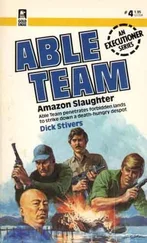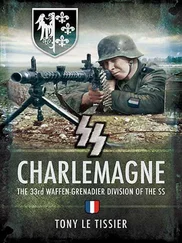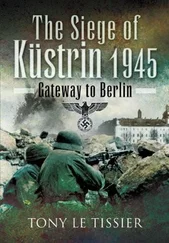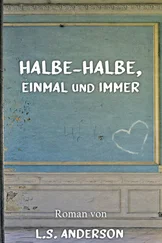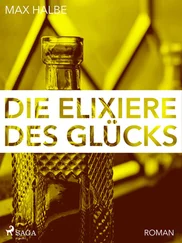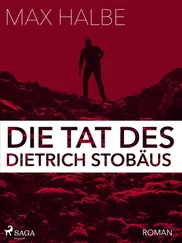There was also some fierce fighting around Treuenbrietzen with a German penetration south of the town eastwards towards Bardenitz, but by 1500 hours this had been driven back to the southern outskirts of Treuenbrietzen by elements of 13th Army assisted by 5th Guards Mechanized Corps’ artillery, whose commander, Colonel Nikolai P. Dyakin, was killed in the action. [4] Kreisleitung Jüterbog booklet, pp. 23–4.
Oblivious to the conditions under which the German forces were operating, Hitler was planning the relief of his capital and re-ordering the command structure. In future OKW was to be responsible for overall operations under his instructions. His orders would be passed through the Chief of the General Staff of the OKH, General of Infantry Krebs, who was with him. OKW would deal directly with 12th Army and Army Group Weichsel with 9th Army. The main task of OKW was: ‘By attacks with all forces and means and greatest speed to re-establish broad contact with Berlin from the north-west, south-west and south and thus bring the battle for Berlin to a decisive victory.’ [5] Förster/Lakowski, 1945 – Das Jahr der endgültigen Niederlage der faschistischen Wehrmacht , p. 337.
That day Hitler told General Weidling, now commanding the Berlin Defence Area:
The situation will improve. The 9th Army will come to Berlin and deliver the enemy a blow with General Wenck’s 12th Army coming up from the south-west. This blow will be delivered against the southern flank of the Russian troops attacking Berlin, and from the north will come units under Steiner’s command to attack the Russian northern wing. These strikes will change the situation to our advantage. [6] Lakowski/Stich, Der Kessel von Halbe 1945 , pp. 80, 82 [citing Refior Berlin Diaries, p. 141].
In numerous urgent telephone conversations, Krebs demanded, on Hitler’s orders, counterattacks by 12th Army, SS-General Felix Steiner’s corps north of Berlin, and even by 9th Army. Krebs was fully aware of the impossibility of executing these orders, and was only passing them on to calm Hitler down. Although completely out of touch with reality, the orders signed by Krebs were still being sent to 9th and 12th Armies for action.
General Wenck’s orders for his 12th Army concentrated on the reception of the break-out elements of 9th Army. He had begun the day before with the deployment of a weak security screen against the southern flank of 1st Ukrainian Front as his XX Corps assembled and marched on the Beelitz–Niemegk area. This thrust towards Beelitz and Potsdam was to have some initial success, but brought no relief to the Berlin situation, except to provide a source of hope to the encircled population and defenders.
Major-General Ernst Biehler’s Frankfurt-an-der-Oder garrison at last succeeded in breaking through to 9th Army, a full three days after receiving Hitler’s permission to do so. General Busse could now begin to concentrate his troops for a break-out attempt to the west. Whether he was mentally prepared to act in defiance of Hitler’s orders, however, remains doubtful. Meanwhile his pocket was being harassed day and night from both land and air, and it was time to act if the people in his charge were to have a chance of escaping death or capture at the hands of the Soviets. [7] Busse, ‘Die letzte Schlacht der 9. Armee’, p. 167.
Wolfgang Fleischer has provided the following description of the scene in the Märkish Buchholz area that day:
The village was burning. The concrete bridge over the Dahme had been badly damaged in an air attack and was no longer usable by vehicles. Units of 9th Army were making their way to the north-west, coming through the Kleine Wasserburg Forest and across the Bürgerheide Heath up to the Dahme on a broad front, leaving abandoned vehicles, discarded weapons and equipment strewn along the forest tracks.
During the night sappers threw two emergency bridges across the Dahme. Because of the mainly swampy ground, heavy vehicles could only get to the river south-west of the Hermsdorf [Grossemühle] Mill and Herrlichenrath. The sappers’ work was interrupted from time to time by Soviet night bombers and occasional artillery fire in between. The first vehicles crossed over once it was fully dark, the tanks grinding their way over the banks of the river with engines thundering and tracks spinning, while refugees continued to hurry across the bridges between them.
Gradually the congested mass of men and vehicles made its way westwards, the Berlin road (Reichsstrasse 179) was crossed, and the Hammer Forest absorbed the refugees. An unholy chaos reigned. Soviet artillery fire kept forcing people to take cover. Hissing and howling rockets came in between and left flat, smoking craters. Sharp-edged splinters swept across the woodland and found numerous victims among those pressed close to the ground. Almost continuous sounds of combat could be heard to the east, south and north, heavy firing coming also from the direction of the autobahn.
Having crossed the Dahme, the units of 9th Army moved along the Berlin road and through the Hammer Forest to Halbe. With daylight the Soviet ground-attack aircraft would be engaging the encircled troops again, making movement even more difficult. The columns became stuck at the crossroads east of Klein Köris. Several Il-2s flew along the road, firing with their machine guns and rockets, the ammunition belts and cartridges clattering down on the road surface, the tracer bullets biting into vehicles, horses and human bodies. [8] Fleischer, ‘Der Kessel von Halbe’. The Il-2 was named Ilyusha after its designer, Sergei V. Ilyushin, and was a ground-attack aircraft armoured with up to 13-mm plate, making it virtually impervious to infantry fire. At this stage of the war it was armed with two 37-mm wing-mounted cannon and two 7.62-mm machine guns in the engine cowling, and could also carry four 82-mm rockets or 100-kg bombs as an external load.
In the woods of the Halbe area were now concentrated the remains of XI SS Panzer Corps, V SS Mountain Corps, the Frankfurt fortress garrison, and V Corps, with in all the remnants of one tank and 13 infantry divisions, plus a number of independent units. Also with them were a large number of sick and wounded, as well as refugees, Wehrmacht employees, female flak and signals auxiliaries, forced labourers, prisoners of war, and even concentration camp inmates. The exact number of people surrounded in the Halbe pocket has never been calculated with any exactitude, but estimates vary from 150,000 to 200,000.
According to 9th Army’s rear area commander, Lieutenant-General Friedrich-Gustav Bernhard, there were some 50,000 fighting troops and 10,000 Volkssturm personnel in the pocket and ‘including rear service units, there were up to 150,000 men in the pocket. Also in the pocket were the whole headquarters of 9th Army under General Busse and his staff, the commanders and staff of XI SS Panzer Corps, V SS Mountain Corps and V Corps, as well as senior officers of the rear area services.’
Soviet accounts reckoned that the German force amounted to 11 regiments, 4 brigades, 71 battalions, one artillery regiment, 5 artillery battalions, 1 tank regiment, 1 tank battalion and the Frankfurt fortress garrison. Some, certainly exaggerated, Soviet accounts also include figures of over 2,000 guns and mortars and about 300 armoured vehicles in the pocket.
There would be little sense in attempting a comparison of strengths between the opponents, as no reliable figures are available for the German side. Witness accounts give subjective impressions and are seldom based on documentary evidence available today. Apart from this, only definitive comparisons at an exact time and place would have any value, as the strengths of the surrounded group varied daily, if not by the hour, for the worst. Accordingly all figures given serve only as a rough indication.
Читать дальше

